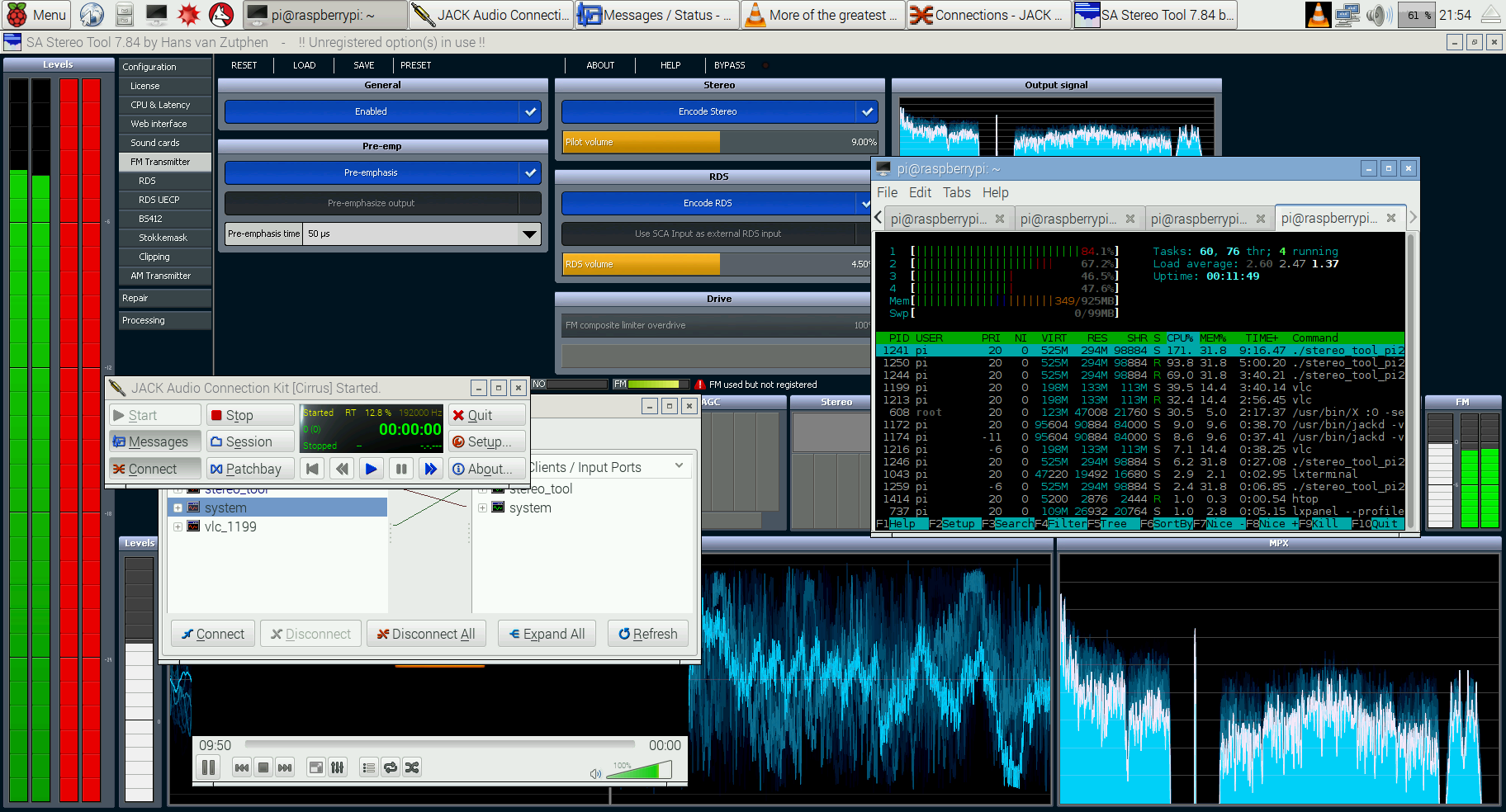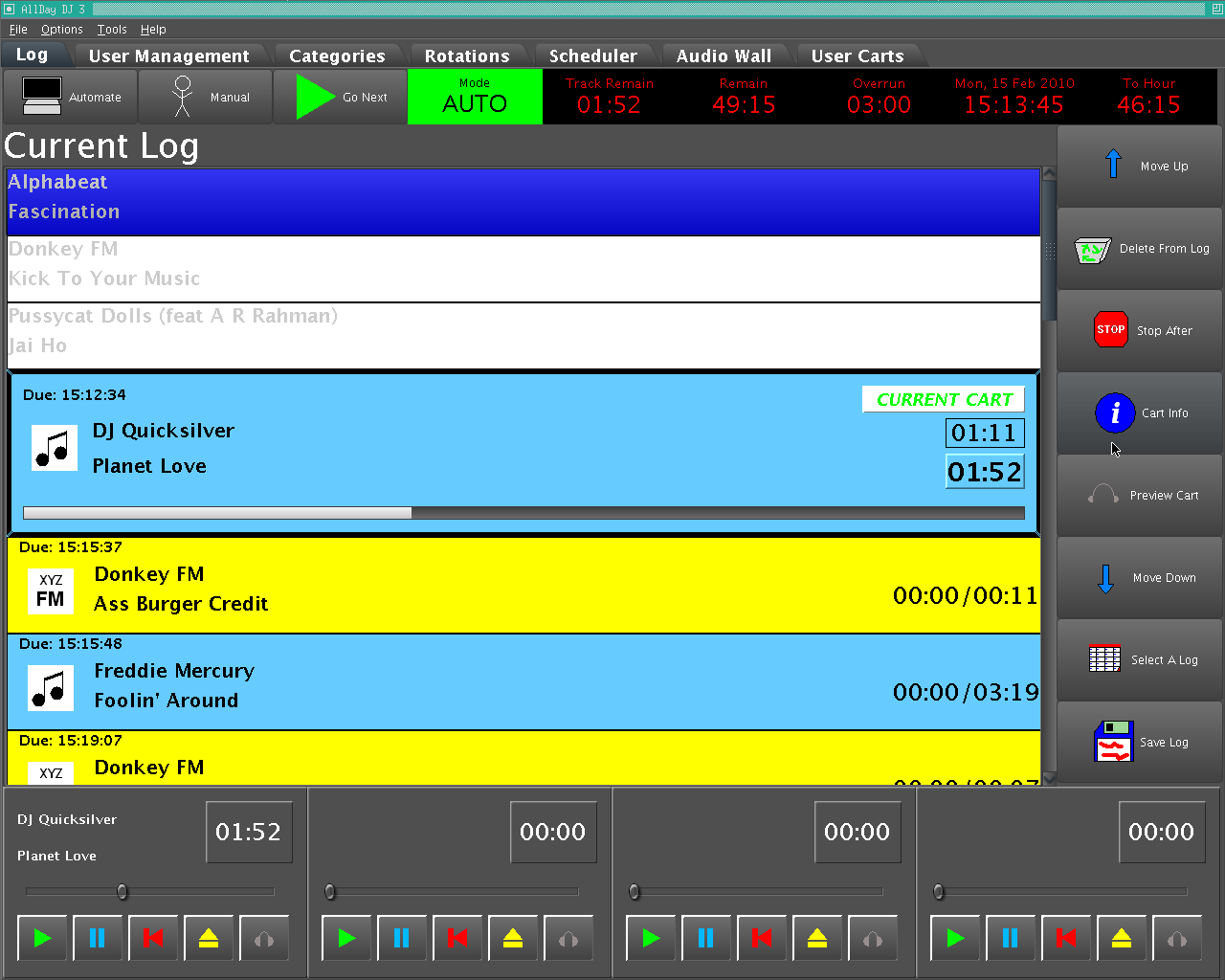Low Power DAB Multiplex
In case you’ve not noticed, we recently saw the first trial low power DAB multiplex launch in Brighton. It’s part of a nine month technical trial covering three possible technical options.
The first of these options is a single transmitter site. Each station encodes the MP2 audio and sends it to a single location to be multiplexed and modulated.
It’s not anything particularly new. It’s been possible to do this stuff with the mmbTools open source DAB transmission tools and a HackRF (or similar) for many years now.
In fact, I’ve seen many test multiplexes pulling web streams, re-encoding them (it’s needed even if they’re AAC for DAB+), multiplexing them and even modulating/transmitting them using a single PC.
With a satellite dish pointing the right way, it’s possible to pick up the ETI (transport) streams for multiplexes like D1 and Derbyshire where line feeding every site wasn’t possible. You could pipe that straight into the mmbTools chain and have a multiplex running in seconds.
The more interesting parts of the experiment are the second and third options Ofcom want to trial. The second option makes use of the same equipment but involves multiple sites.
The streams are multiplexed once and sent in parallel to all transmitter sites. GPS synchronisation is used to ensure every site transmits the same data at the same time. As it’s using QAM (on multiple parallel channels), the aim is that any symbol will arrive from each site in the same guard interval.
Experience from faults reported on bigger multiplexes tell me that loosing GPS synchronisation is rather problematic. In the worst case, the drifting site will begin to “interfere” with others, impairing coverage in areas the two sites cross.
The third and final option Ofcom are wanting to trial is the most interesting. It’s the DAB equivalent of an analogue RBR (rebroadcast). The audio feeds are multiplexed and transmitted from one site. A second site then receives this broadcast and re-transmits it on the same channel.
This should theoretically work assuming the rebroadcast is quick enough that it gets to any cross-over area in coverage within the guard interval. That, or it would need to serve an area that has no real cross-over in coverage.
The equipment they use for this should be interesting to look at. However, I do wonder about the need for such an arrangement in reality.
Any site likely to be used for such a rebroadcast probably has “line of sight” to the source transmitter. If this is so, and considering the low power (thus short distances) used, it should be possible to provide a point-to-point IP links. The GPS synchronised approach then looks more promising.
Either way, it’ll be interesting to see the outcome of this experiment. Especially from a technical point of view.
As for financial feasibility, the equipment cost is higher than a low power FM installation. It’s also more complicated to operate and maintain. Though that shouldn’t be a problem with the right technical skill set behind you.
I do believe it’s possible for a multiplex operator that allows external services to join should be able to keep costs reasonable enough. Well, certainly more reasonable that current DAB carriage costs for small broadcasters.
The difficult bit I see is in determining who should operating the multiplexes. Should it be a local community radio service? Or should it be a dedicated operator that might also run other local multiplexes? I’d look towards the latter with such a complicated system. Though, I could see stations coming together to run these operator organisations.
This completely ignores the frequency planning side of things. Something I’m sure Ofcom is on top of.
Whatever happens, it should be an interesting technical experiment and could be the start of a historically expensive platform opening up to small scale operators.


